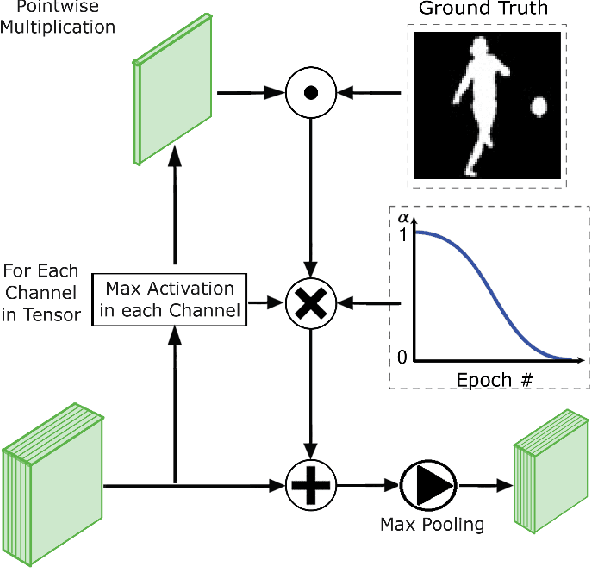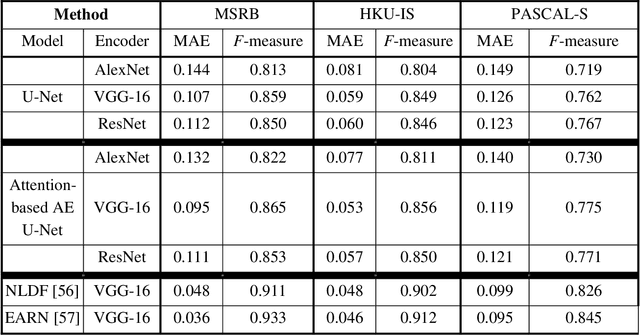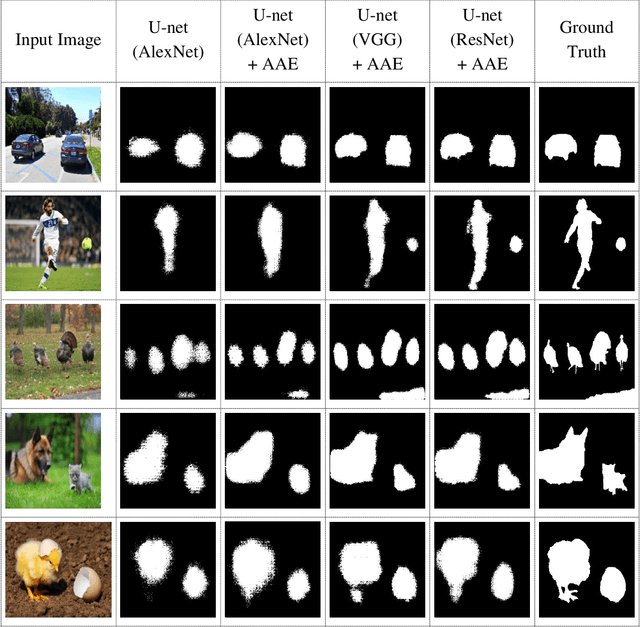Melika Kheirieh
University of Tehran, College of Engineering, School of Electrical and Computer Engineering, Tehran, Iran
Attention-based Assisted Excitation for Salient Object Segmentation
Mar 31, 2020



Abstract:Visual attention brings significant progress for Convolution Neural Networks (CNNs) in various applications. In this paper, object-based attention in human visual cortex inspires us to introduce a mechanism for modification of activations in feature maps of CNNs. In this mechanism, the activations of object locations are excited in feature maps. This mechanism is specifically inspired by gain additive attention modulation in object-based attention in brain. It facilitates figure-ground segregation in the visual cortex. Similar to brain, we use the idea to address two challenges in salient object segmentation: object interior parts and concise boundaries. We implemented it based on U-net model using different architectures in the encoder parts, including AlexNet, VGG, and ResNet. The proposed method was examined on three benchmark datasets: HKU-IS, MSRB, and PASCAL-S. Experimental results showed that the inspired idea could significantly improve the results in terms of mean absolute error and F-measure. The results also showed that our proposed method better captured not only the boundary but also the object interior. Thus, it can tackle the mentioned challenges.
Evaluation of Dataflow through layers of Deep Neural Networks in Classification and Regression Problems
Jun 12, 2019Abstract:This paper introduces two straightforward, effective indices to evaluate the input data and the data flowing through layers of a feedforward deep neural network. For classification problems, the separation rate of target labels in the space of dataflow is explained as a key factor indicating the performance of designed layers in improving the generalization of the network. According to the explained concept, a shapeless distance-based evaluation index is proposed. Similarly, for regression problems, the smoothness rate of target outputs in the space of dataflow is explained as a key factor indicating the performance of designed layers in improving the generalization of the network. According to the explained smoothness concept, a shapeless distance-based smoothness index is proposed for regression problems. To consider more strictly concepts of separation and smoothness, their extended versions are introduced, and by interpreting a regression problem as a classification problem, it is shown that the separation and smoothness indices are related together. Through four case studies, the profits of using the introduced indices are shown. In the first case study, for classification and regression problems , the challenging of some known input datasets are compared respectively by the proposed separation and smoothness indices. In the second case study, the quality of dataflow is evaluated through layers of two pre-trained VGG 16 networks in classification of Cifar10 and Cifar100. In the third case study, it is shown that the correct classification rate and the separation index are almost equivalent through layers particularly while the serration index is increased. In the last case study, two multi-layer neural networks, which are designed for the prediction of Boston Housing price, are compared layer by layer by using the proposed smoothness index.
 Add to Chrome
Add to Chrome Add to Firefox
Add to Firefox Add to Edge
Add to Edge